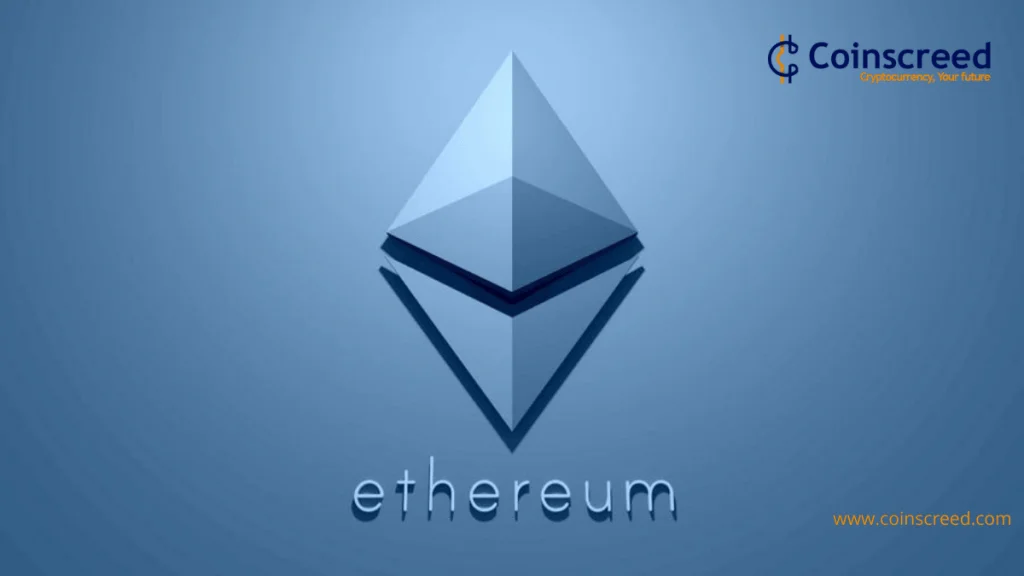Ethereum developers and contributors claim that the network’s emphasis on security provides a solid foundation for future growth.

Ethereum popularized decentralized finance, which has now grown into a $250 billion industry thanks to the network’s app developers. However, by 2022, its share of the pie may have shrunk.
JPMorgan Chase’s investment bank has a team of analysts who believe this. Team head Nikolaos Panigirtzoglou warned in an investment note on Wednesday that sharding—a strategy for dramatically increasing the amount of transactions that can be completed on a blockchain—”might arrive too late” for Ethereum to fend off rising market competition from rival blockchains.
With greater speeds and lower fees, Avalanche, Binance Smart Chain, Solana, and Terra have been able to deliver many of the same types of applications as Ethereum.
“Ethereum is currently in an intense race to maintain its dominance in the application space with the outcome of that race far from given, in our opinion,” the note reads.
Ethereum Devs remain optimistic
However, according to numerous Ethereum engineers and contributors, rumours of the network’s extinction are highly overblown.
“Overall, it seems a bit like a lazy / very high level critique,” remarked Tim Beiko, the Ethereum core development meeting organizer. “Rollups are live today, and sharding will lower their costs, but the tech works and is now massively derisked,” he says, alluding to an off-chain transaction execution method that is currently in place to help the network scale.
“Ethereum is still the most used chain when you look at the data,” said Tegan Kline, who co-founded the team that created the Ethereum indexing protocol The Graph. “Of the 26 networks that The Graph supports, 66.7% of the queries are on Ethereum.”
Decentralized finance, or DeFi, refers to blockchain-based applications that enable consumers to conduct a variety of financial transactions that would otherwise require the assistance of a bank or broker. These apps eliminate intermediaries, allowing peer-to-peer lending, trading, saving, and borrowing. As a result, no one else has control over your assets.
MakerDao on Ethereum was the first significant DeFi app to gain traction in 2017. DeFi on Ethereum has grown in popularity over time. Over 250 protocols with at least $1 million in ETH are listed on DeFiLlama.
Other chains, on the other hand, are catching up, owing to the fact that they’ve implemented more scalable proof-of-stake systems, which avoid network congestion and expensive transaction costs.
Ethereum is shifting to a proof-of-stake system as well, although depending on who you ask, development on “Ethereum 2.0” has been either purposeful or delayed. In the following year, the current chain (which utilizes proof of work like Bitcoin) will merge with the beacon chain (which employs proof of stake). The Ethereum core developers can then concentrate on sharding.
While scalability (including sharding) is crucial, other issues take priority, according to Pooja Ranjan, who leads the Ethereum Cat Herders, a decentralized project management team.
For example, Ethereum developers have continuously prioritized security over speed while ensuring that the network is never offline. The Solana network, on the other hand, was forced to shut down for nearly 18 hours in September due to excessive transaction volumes. According to Kline, who spoke to Decrypt, “At the end of the day, chain security is critical for financial transactions, and Ethereum offers the best security for the foreseeable future.”
DeFi projects on other blockchains, according to Kline, are “heavily driven by token incentives,” which means that participants receive tokens that they can buy or sell as a compensation for participating. “We are going to see a lot more DeFi activity on Ethereum if Ethereum layer 2 embraces the same incentives,” she said.
However, the head of public affairs for Parity, the company that created Polkadot, feels that developers are growing impatient with the wait for Ethereum 2.0 to be fully functional.
“The Ethereum sharding plan has changed so many times that it’s difficult to know what will happen and when,” Peter Mauric explained. Polkadot has the second-largest developer pool after Ethereum, according to a research released this week by Electric Capital, and it’s expanding faster than Ethereum did at a similar stage.
Pantera Capital partner Paul Veradittakit is balancing his bets among different DeFi blockchains, noting that Solana has become home to several DeFi gaming firms. “We’ve put a lot of money into Polkadot and Solana, and we’re excited to explore and expand into more chains like Near and Avalanche in the future year,” he told Decrypt.
That isn’t to say Ethereum can’t stay on top. “My naive opinion is that DeFi exists because of Ethereum, and as long as Ethereum exists, DeFi will be a major driving factor for mainstream engagement,” Ranjan said.
